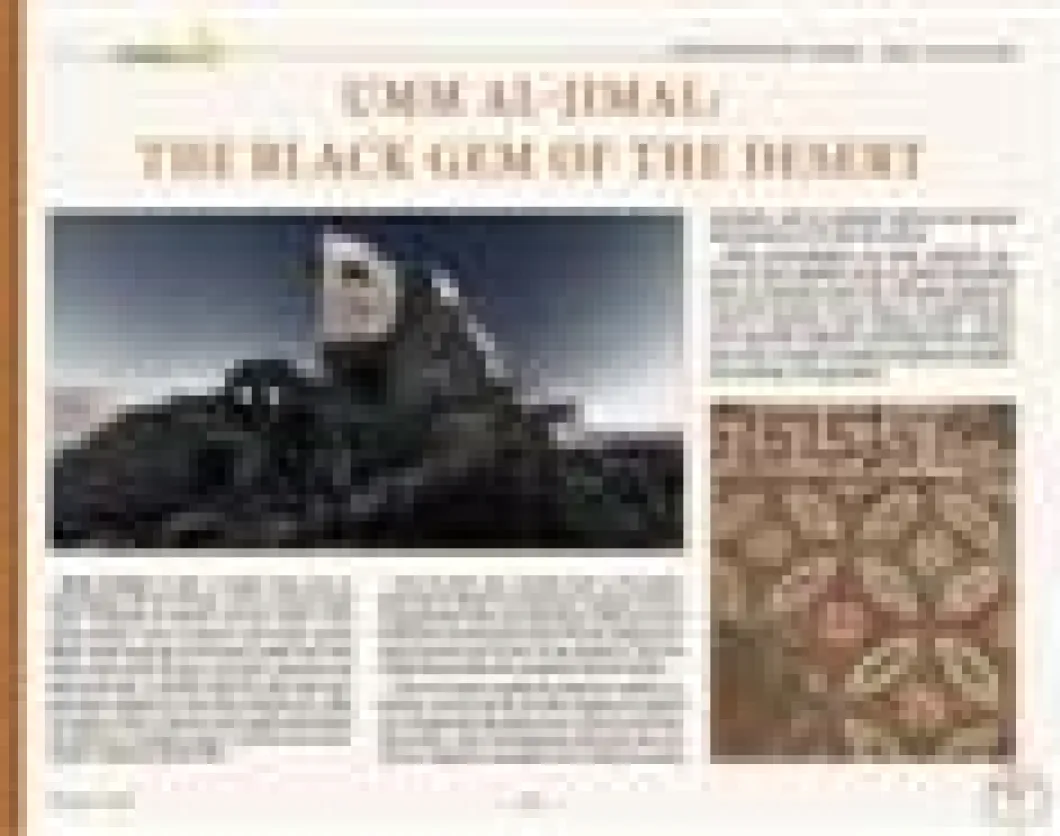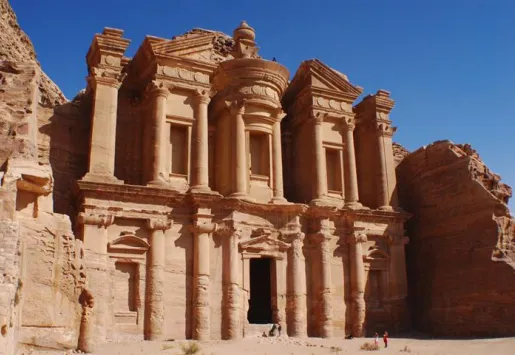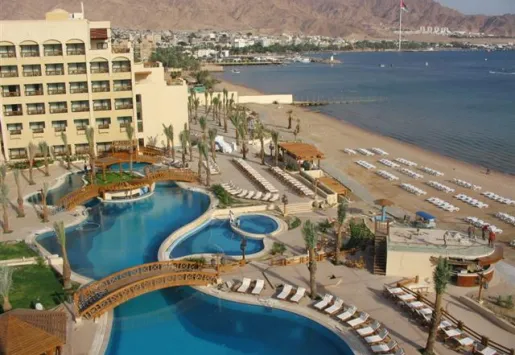Umm el-Jimal is both a modern town and archaeological site of unknown name, located about 70km northeast of Amman and just south of the Syrian border. Umm al-Jimal is now known as the Black Oasis because of the black basalt rock from which many of its houses, churches, barracks and forts were built. In ancient times the site was occupied from roughly the 1st to 8th centuries CE. After its decline, Umm el-Jimal’s dark basalt architecture lay silent for a thousand years, until the Druze reoccupied it following World War I.
Umm el-Jimal was a frontier town in the desert, likely first inhabited by Nabataean traders caravanning between Petra and Damascus. With the arrival of Rome in the second century CE the village eventually became part of the Limes Arabicus—the line of garrisoned forts that protected Roman Arabia.
Umm el-Jimal’s inhabitants existed in relative autonomy, and by the 5th and 6th centuries it peaked as a prosperous Byzantine town of five to ten thousand souls. Over the following centuries Umm el-Jimal’s residents remodeled and reused its stone structures, until its probable decline and gradual abandonment in the late 8th century.
{%C2,3%}
Today archaeological and other researchers continues to piece together Umm el-Jimal’s fascinating story of everyday ancient life. Although located on the semi-arid plain of the Hauran, its residents devised an ingenious water storage system. Canals and reservoirs collected runoff water from kilometers away, enough to sustain thousands of people, their animals, and agriculture.
Umm el-Jimal is also home to unique architecture. Ancient denizens used abundant black basalt from the region’s volcanic plain to construct sturdy, cool structures reaching up to six stories skyward. Techniques such as corbelling allowed most buildings to contain multiple floors, while cantilevered stairways provided access. Built-in, ground-floor managers provided for family livestock. On the edge of empires, for hundreds of years Umm el-Jimal’s citizens successfully created a thriving home.















